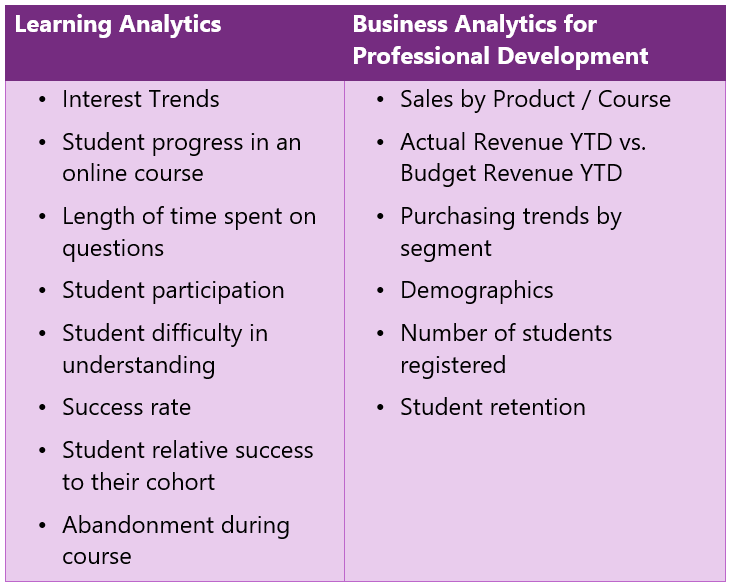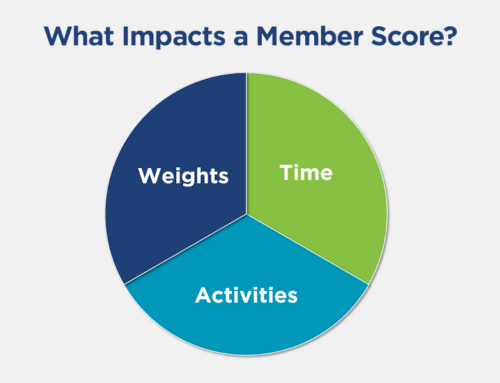For many associations, education is more than just a source of revenue and a key member benefit. It is a cornerstone for the organization’s existence. Despite the importance of education, associations still struggle with how to measure the success of professional development programs. According to Tagoras, 87% of associations offer e-learning, but less than 30% use data to make decisions about their educational programs.
The problem is two-fold for associations.
First, there’s the question of what associations should be measuring to gauge the impact programs have on students.
Second, associations have to figure how to measure impact.
What to Measure in Learning Analytics
Recently, Debbie King, Association Analytics® CEO, presented a session about learning analytics at the American Society of Association Executives (ASAE) Spark Conference, an online conference about the art and science of adult learning. What is learning analytics and how can it help your association?
George Siemens, a noted expert on the topic, wrote that “learning analytics is the measurement, collection, analysis and reporting of data about learners and their contexts, for purposes of understanding and optimizing learning and the environments in which it occurs.”
This is distinct from business analytics for educational programming, which focuses on operational or financial performance.
Most associations have access to business analytics for their educational programming. They can find revenue, expenses, demographics of registrants, or number of registrants for any given program. This is important information, but doesn’t necessarily provide insight into how to better engage students or how to improve student success.
To better understand the distinction between learning analytics and business analytics, it’s helpful to look at the difference between common key performance indicators in both areas.
See the difference? Learning analytics is focused on the student and their success. Business analytics for professional development is focused on the program and its success. The two are closely related, but separate and its worth considering both to ensure program success.
How to Measure Learning Analytics
One major obstacle to engaging in learning analytics is determining how you will measure professional development programs.
Where is the data needed to understand impact? How do you combine data from multiple, disparate data sources to easily analyze information in a single location?
After you define what you want to measure, you need figure out where to get the information. Relevant data sources may include your Learning Management System (LMS), Association Management System (AMS), Event Management System (EMS), and even your web analytics program.
The data can then be integrated with a data warehouse where it can be combined and prepared for consumption by business users. You can visualize and interact with the data using a business intelligence tool, like Power BI or Tableau. To learn more about data warehousing, see our post on data warehousing.




